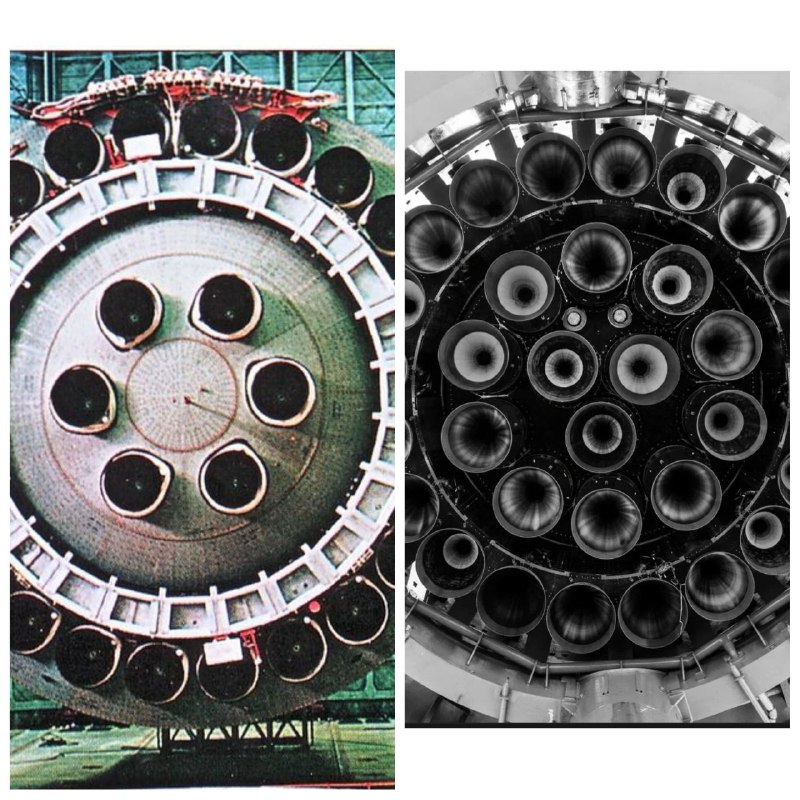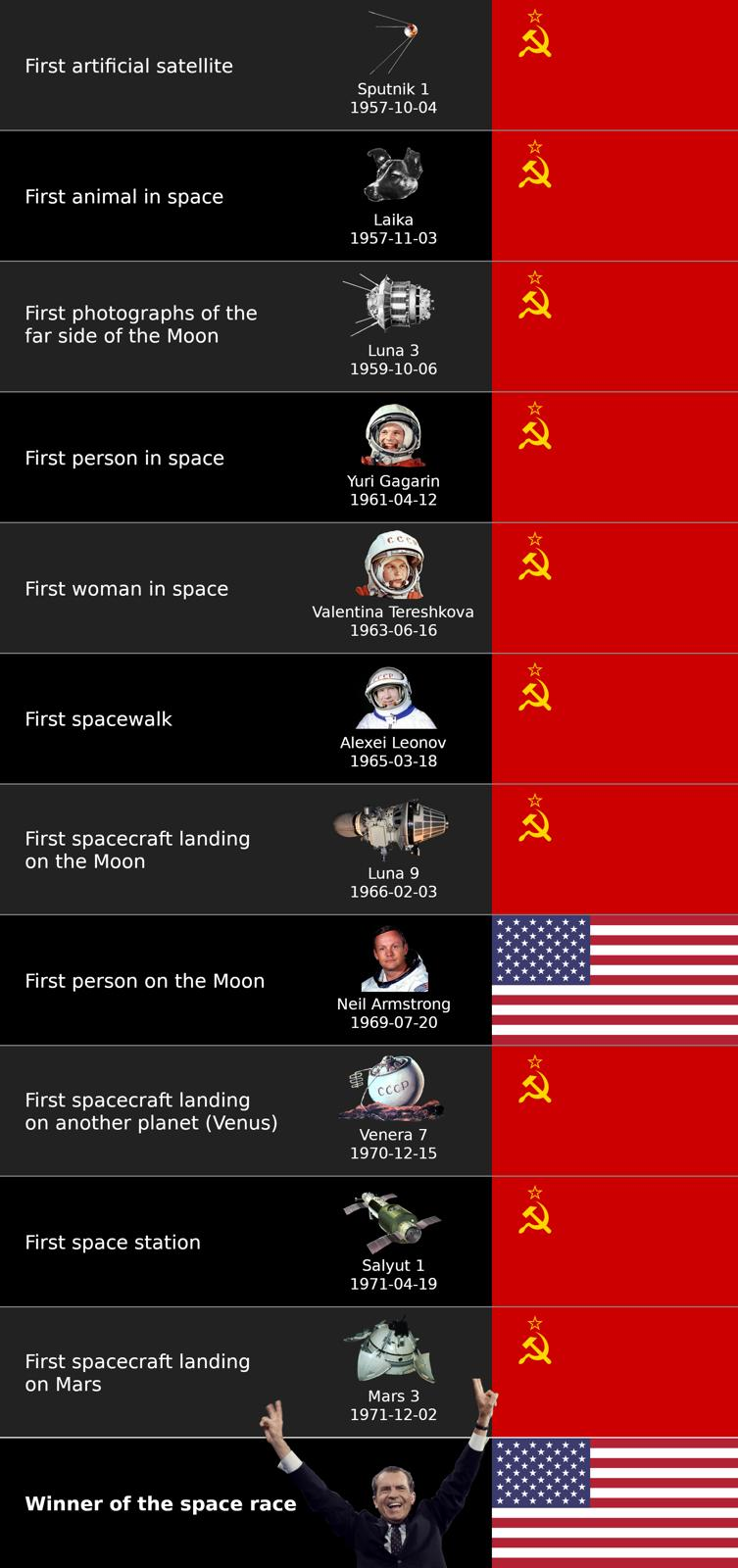deleted by creator
deleted by creator
I’ve never seen a more accurate application of this meme, honestly. The amount of grandstanding by the US on one achievement out of a hundred is impressive.
No one ever remembers voyager. 40 years old and the first craft in interstellar space.
The US still hasn’t landed on Venus and probably never will
Not until I complete my plan to yeet America onto Venus anyway.
Those photos from venus are still the coolest space photos I’ve seen
Not much to gain by going there. Wildly corrosive, too hot, too hard to terraform with present tech.
Terraforming isn’t on the table anywhere. We can’t even stop fucking up this planet, let alone unfuck it, let alone apply much more advanced unfucking tech on planets without any of the environmental cycles we take for granted.
Space programs do science stuff and military stuff. Revisiting Venus would be for science stuff.
Space programs definitely do science and stuff. All I meant to say was that Venus might not be the lowest hanging fruit for scientific discovery. It’s really expensive to go there. Doesn’t mean we shouldn’t.
I see now how my post could read as an elon-fanboi type “colonize all the things” and that was not what I intended. I do think Atmospheric sensor clusters on Venus would be pretty awesome. It could give us an interesting set of insights into a wildly different environment.
At 50km high it is literally the most Earth-like environment in the whole of the solar system (outside of Earth / the ISS / Tiāngōng obviously)
You wouldn’t even need a spacesuit or a pressure suit to stand outside, just a respirator and some light protection against acid
That is so fucking cool to think about
One of the only places in our system where you could feel the wind of another planet in a cool 25C against your face without protection except for eye goggles (not for very long though, again, acid).
The idea of floating outposts there is at least 50 years old (and comes from a soviet scientist originally IIRC); balloons filled with breathable air - which is a nice reserve for the same as a bonus - would have enough buoyancy at this altitude to support relatively large outposts attached to them. Not only that, the cosmic ray protection afforded by the atmosphere at that altitude is basically similar to the one on Earth; and those balloons wouldn’t need to be pressurized either, just filled, meaning if you get a leak you have potentially hours to fix it (or even days / more if you connect several such balloons together with some buoyancy margin).
I’d always assumed that floating Venus colonies were fun sci-fi nonsense. I’m kinda taken aback at how feasible it actually is
Jesus Christ liberals’ brains are mush. the point of science is to learn things, not find new planets to ruin
Death to America
As opposed to all those easy places to terraform
Maybe we should try terraforming earth before we start to look elsewhere idk.
Don’t you worry - looks at CO2e levels - we are

Me: Can we go to Venus?
Mom: No, we have Venus at home.
The Venus at home:
hard to terraform with present tech
What place isn’t hard to terraform with present tech?
Hell, even terraforming Earth with present tech can prove a challenge at times.
I mean other than scientific discovery like what’s up with the phosphine, we keep detecting it and debunking it sure would be nice to have something floating there to figure it out (or landed for however long they last)
Removed by mod

New account, baby joke. Yeah, it’s lib time.
I see you’ve already been to jupiter
Soviets are also the only country to have landed on Venus. Not just the first, the only one.
The images from Venus are absolutely fascinating. If I recall, the craft that took the first images burned up after a very short amount of time (like 50 or so minutes) because of the extreme heat.
It always comes across to me as maximum cope when Americans brag about “winning the space race”. I mean, even if it was true, the US’s economy was massively wealthier than the USSR’s. This “race” was literally between the wealthiest country on earth and a very poor country. Even at the height of the USSR, its GDP was only about half that of the US’s.
It really does not show the US’s “strength” to brag so much about winning against someone with so much less resources. It’s a sign of weakness to actually even be in a “race” with a developing country to begin with, which suggests they are actually competitive and have a chance of winning.
That’s really what the whole “space race” shows. It does not matter who “won”, the very fact a poor developing nation could compete with the wealthiest and most powerful country on earth in the first place demonstrates the extraordinary weakness of the capitalist system.
The US only placed a man on the moon because of NASA, which they founded as a direct response to the Soviets launching Sputnik. Meaning, the US literally only implemented this space program as a response to the Soviets, they were not a natural outgrowth of the US’s system and would not have happened without the Soviets (as we have seen NASA massively defunded ever since). The fact the US even got on the moon in the first place only happened because of the USSR.
That was back in 1969, and we’re now in 2022 yet, funnily enough, the capitalist private sector has not got a man that far yet.
—aimixin
even as an anarchist, I’ve got to hand it to the soviets on this one.
yankoids stay losing lmaooooooo
It’s two different approaches to the moon.
The Americans’ F-1 rocket engine that powered the Apollo flights was truly impressive, and remains one of the most powerful single combustion rocket engine ever made. However, they were gas generator engines that are highly inefficient, which is why today you won’t see the Americans trying to go to the moon using the same design.
The Soviet N1 moon rocket was instead powered by 30 small but far more efficient NK-15 engines. The problem for them was that the computer system used at the time (KORD) was not responsive enough to react to multiple rapidly occurring processes and which led to faulty controls during launch.
To put it another way, the Americans strapped on the bigger but less efficient rocket engines and got lucky. The Soviets tried a novel and innovative design that was way ahead of their time and failed.
However, the Soviets shall get the last laugh, because 50 years later the American SpaceX company would copy the same concept for their super heavy lift vehicle design (Super Heavy used for Starship), which in many ways conceded that the Soviet design was a more viable one.

On the left: N-1 (1969-72), on the right: SpaceX Super Heavy (April 2022, which exploded during the test launch)
Reminder that even 50 years later, SpaceX Starship also experienced failure during its first orbital test flight despite advances in technology and especially leaps in computing power.
However, the Soviets shall get the last laugh, because 50 years later the American SpaceX company would copy the same concept for their super heavy lift vehicle design (Super Heavy used for Starship), which in many ways conceded that the Soviet design was a more viable one
This happens often in American industry, especially aeronautics . More promising designs are considered “ahead of their time” and often lose out to more conventional designs, only for the more promising designs to return later and be adopted. With regards to fighter jets, one just needs to look at the YF-23 vs the YF-22. The battle for the fifth gen fighter jet program. The YF-23 was faster, stealthier, more maneuverable in most common scenarios. The YF-22 ended up winning, and becoming the F-22, because it had thrust vectoring and was more appealing to conventional tactics. But now that the US wants to build a sixth gen fighter plane, and other countries want to build 5.5 gen planes, all the proposed designs look extremely similar to the YF-23. Almost as if it was the better overall design. Similar is happening with the Airforce’s proposed replacement for the F-35, the replacement looks like a clone of an F-16XL. An experimental design that also lost out on a contract to the F15E if I remember correctly, but is now coming back.
oooh 86 comments about the space race. I’m sure this will be very normal

I didnt expect even this one to make the federated libs mad because its just… basic description of the facts. But ok.
Also, it was faked

I don’t subscribe to that one. Personally, to me, it seems to require too many people to stay silent to sincerely fake.
Russia released a transcript of their (the USSR’s) intercepted Apollo moon mission communications last year. If the Soviets say the Americans did it, then I believe it.
Especially at a time when tensions between Russian federation and USA are at an all time high. They have an extreme incentive to lie in the opposite direction and say America never landed on the moon. But they didn’t say that.
True, but I don’t think Russia is that crazy. It’s more of a “we were able to track your entire space flight and hear everything you said”.
However, from what I remembered about the story, it was likely more innocuous than that. Some Russian reporter from a major news outlet (forgot which one) was writing a story and asked the space agency for some materials, and they went sure, here you go. Like, it wasn’t intended to be released as some kind of political statements.
Neat. Do you know where could I read more about this? Google is failing me.
I also couldn’t find it at first and thought I had hallucinated the whole thing.
ty comrade

Makes me want to wag my moondoggie.
deleted by creator
deleted by creator
Soon Hexbear…first shitposters in space.
deleted by creator

deleted by creator
You’ll probably get flak for this but I agree.
if humans can only progress into space by first kidnapping animals, then they don’t deserve to see the stars.
Indeed; I’d have happily volunteered instead of a monkey or a cat for such an endeavour for the benefit of our species; and I’m sure I’m not the only one. There’s something far more moral about testing such things with people fully aware of what they’re doing and the risks compared to sentient beings not comprehending what’s happening to them and likely being in a panic all along the way. There should be a word for it, really.
Oh wait, I think there is: consent
 btw
btwdeleted by creator
Damn morally superior people always mentioning their moral superiority while making a morally superior argument. Let me eat my eggs in peace (I still eat eggs but I promise only from farms that have lots of space for their chickens, I’m almost there comrade)
deleted by creator
Good take on a classic

This is how you remind me of who I really am





















